Experience-Seeds-Knowledge-Plant Discoveries-Ecological Enrichment-Join Now Click Here!

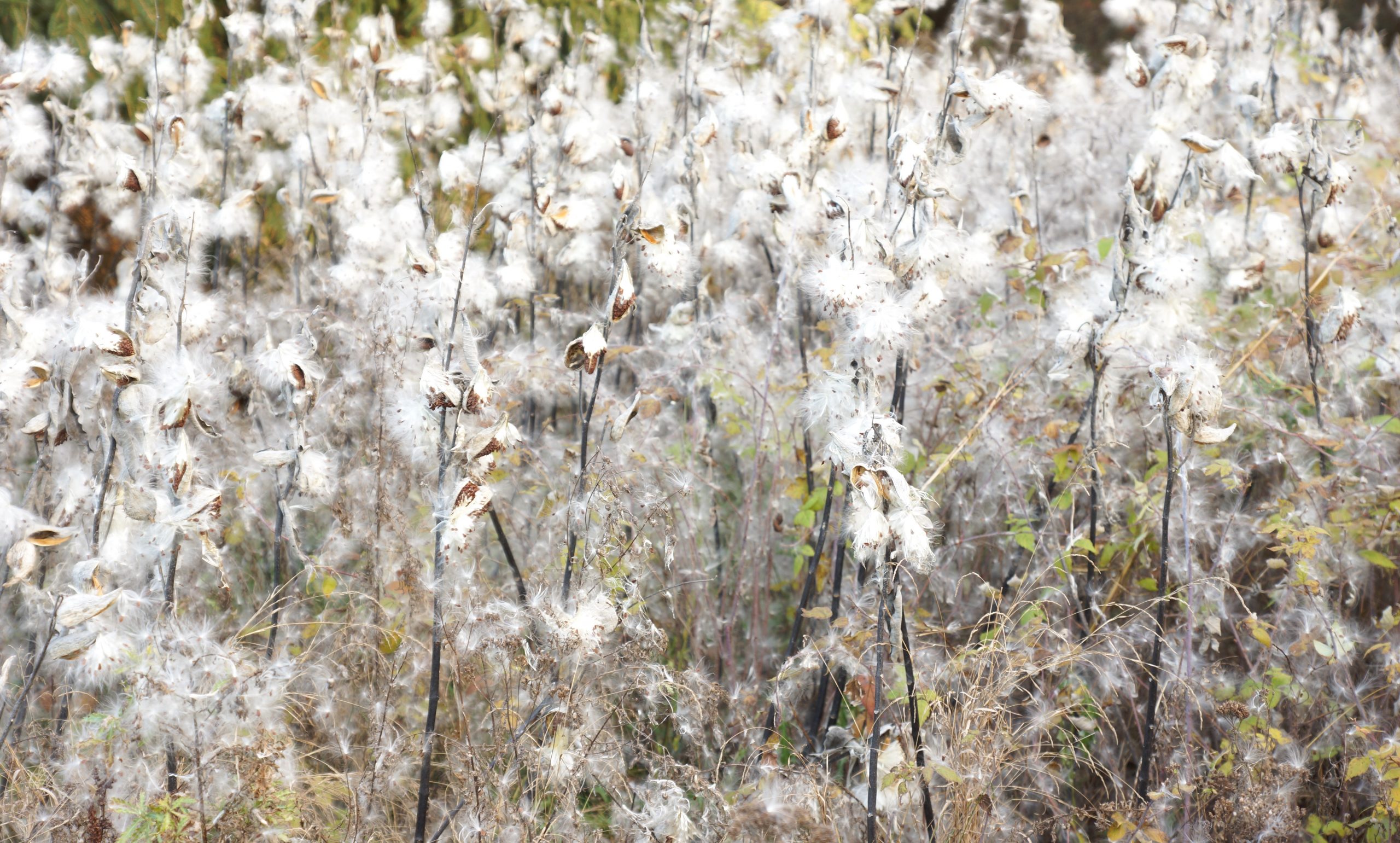
Dreams, Pillows and Curiosity
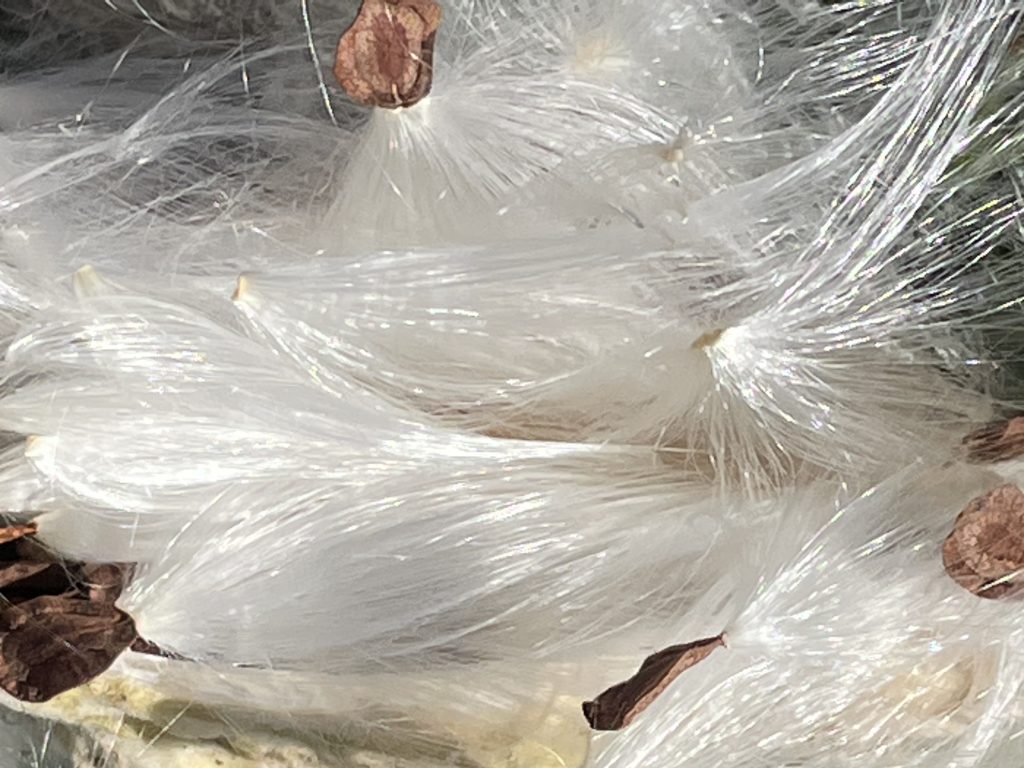
The Milkweed Forest
On one of my family’s Christmas tree farms a great expanse of milkweed existed. This was due to an over application of Simazine herbicide which sterilized the soil for several years. This not only wiped out all existing vegetation, it prevented everything else from germinating. Apparently milkweed was immune to this. The wet sand and lack of vegetation made it the perfect propagation ground for milkweed. This created a several acre plot of solid milkweed. It is not something you normally see. However, once established the five foot tall milkweed plants made it difficult to plant or prune Christmas trees in. It was a thick monostand of forest milkweed.
Luckily my father had a tractor retrofitted for this mower that solved this problem quickly. It was like driving with two helicopters flipped upside down while straddling a row of small seedling trees. It even sounded like a helicopter when you started it up. Chop, chop, chop. I called it the “Human Being Lawn Mower” after the MC5 song. The musical band MC5 was a band I would see live when I was in high school. “Do you hear me? Millimeter, fine millimeter… six times hotter than the sun, didn’t mean to hurt anyone. sorry, sorry…..soon you’re standing standing before the human being lawnmower. chop chop chop chop…..” It operated on hydraulics which you could control with your right hand for lowering or raising the blades. A little left or a little right and that tree was gone. “Sorry. Sorry. Yeahhh.” To make matters worse, if you hit a stump the mower would fly upwards causing panic for the operator. No metal guards. Instead it was like a thick wire surrounding the outside and nothing else. With whirling metal in direct line with your face, it was like you were on the receiving end of a knife throwing contest. The metal wire guards would get all bent up. My dad would say, “OSHA approved” and then laugh heartily. My brother would say P.O.S. tractor only he didn’t abbreviate or laugh. It was made by a high school shop teacher near the farm. When it broke, which it frequently did, the ‘Hank Stamper’ (Ken Kesey’s, Sometimes a Great Notion) of shop teachers would ask “where have you been mowing, a rock quarry?” The stumps were brutal. The helicopter style mowing caused the white sticky sap to go everywhere covering myself and the tractor. The milkweed would recover and reappear the following year.
Milkweed at the farm was what I called a dynamic plant. Clouds of butterflies were common. You could see the honeybees getting stuck on the flowers with their legs getting hooked on the blossom. Sometimes I would try to set them free without getting stung. Huge numbers of butterflies and bees used the flowers especially bumblebees and fritillary butterflies. When in blossom, the whole area had a sweet smell. Looking to the north once at the long end of the field, it was like a sea of dancing butterflies. As the trees matured in this area the milkweed took less of a footprint and grew amongst the scotch pine and white spruce. Other plants soon grew in its shade. The simazine finally lost its grip.
The Search For Greater Yields of Fluff
It is from this experience that I always marveled at milkweed and tried to establish every species at my farm as soon as I purchased the land over thirty years ago. Funny in that it was harder to establish than I thought. Borers would burrow into them and weaken the plants. To this day, I still try to find new plants. One of the best selections was near a cement culvert with what looked like 100 plus pods on it. Another was nearby on a walk I take near a mailbox. At one point, while collecting seeds I had the thought this would make great insulation for a hat or to stuff a pillow. I began looking for fluffy selections with massive clusters of seeds. I didn’t get too far with that idea but it was enjoyable to think about.
Apparently many people have had similar dreams of sorts using the fluff as a sort of cotton or goose down substitute. People write about their experiences doing this for mittens, hats and pillows. Recently I read about a farm that scaled this idea up has done exactly that. It took some serious investment dollars and development to make that idea into reality. Curiosity is one thing, cash is another when the idea hits the road in development. Ogallala Comfort uses wild collected fluff and other companies are figuring out if it can be cultivated sustainably as well as profitable.
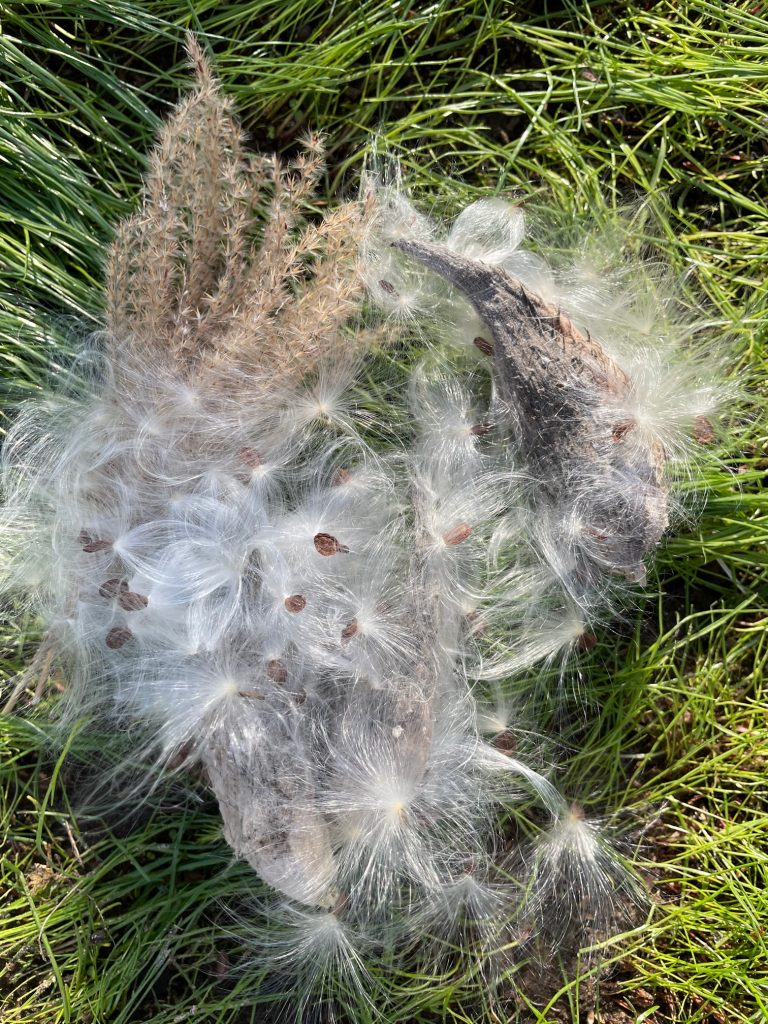
Is It Edible?
Since my first introduction to milkweed, I always read about its edibility of the immature pods by early native Americans. I also found that its active compounds are cardiac glycosides an important chemical to prevent the consumption of Monarchs by birds. Several employees of mine told me of very negative consequences from a quasi-trained wild food forager cook out where everyone got sick. I’m tapping out on the edibility of milkweed for now unless someone does actual science on what happens to cardiac glycosides when you cook them. I see potential problems as does the USDA. But my employees did say this prior to their chunkage on deck experience: it was delicious. Two words: cardiac glycoside!
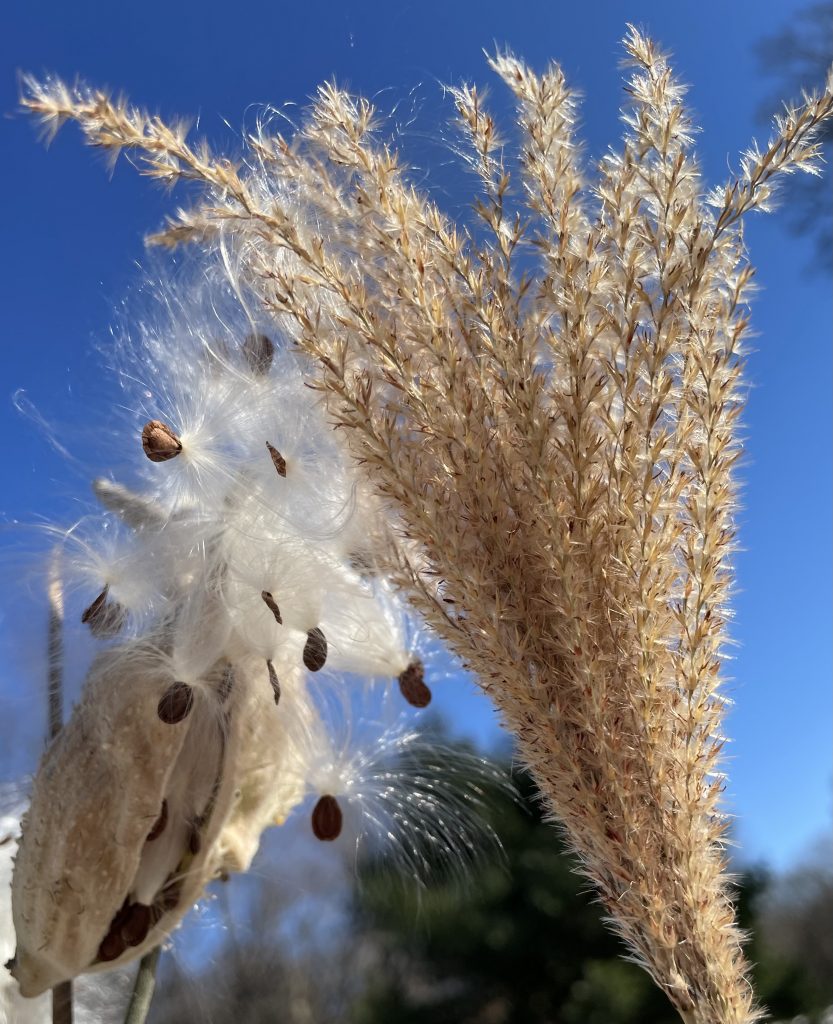
All things soft and quiet.
Since my milkweed experience, I wondered if there were other alternatives to cotton. Cotton was an interesting crop and easy to grow in Michigan. But it does not fully ripen. Seeds do not mature nor did they produce the bole fully with the exception of the first few flowers. The rest of the pods on the same plant are destroyed by frost. But there are many other species of plants that are overlooked with the potential fluff factor even if they are not possible to weave into cloth or practical to grow. Many grass species with plume type heads abound including Phragmites and Miscanthus. There is a cotton type sedge found in the arctic. Could you dive into a swimming pool of grass seed heads?
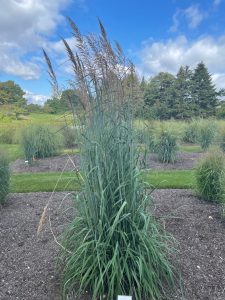
I spent some time at the prairie grass selections at the Chicago Botanical Gardens. You could see the plumed heads far away. You need a measurement of fluff. I would call it the ‘soft-fluff-factor’. Fluffiness could be an objective verifiable softness test. I suppose you could have a one on one discussion with each species and selection. It might go like this.
Interview With A Grass
Interviewer: How fluffy are you?
Grass: I am very fluffy. I have a degree in Fluff from Fluff State. There I majored in fluffiness and began interning at the Fluff Institute. In fact my whole evolution is based on fluff. You can see it in my resume spanning several million years. Frankly, a lot of friends of mine copy my design all the time.
I see and what about your work experience?
Grass: My first job was caretaker of my own fluff prior to dispersal. Once fully fluffed, my seeds scattered far and wide carried by the wind. A few birds stopped by and consumed some of my progeny. But that is good as some escape the ravages of the birds intestinal track and then are carried even further locations along with a bit of fertilizer from the bird. You could see how important I am.
Oh yes of course. I never doubted you. What about pillows? Have you ever worked in pillows?
Grass: No. But no one has asked. I mean I probably could work in pillows but really is that a thing? I was not aware of this.
Yes. It appears your services could extend to the resting human head. Your fluffiness would create a new soft wear to capable of assisting enlightenment in the human species by assisting deep rest and comfort. This in turn allows for transcending during the sleep and dreaming states of consciousness making for a more coherent and creative human being. Are you in?
Grass: Sure. My fluffiness has always been there. It’s my characteristic charm. I am honored to serve and assist. Can I get some help?
What help do you need? You seem perfectly fluffy to me.
Grass: Distribution.
Hmm, yes. Good idea. That is your salary?
Grass: Yes. I am always on the move. That is the purpose of my fluffiness you see.
Interviewer: Understandable. You’re hired.
As Grass Leaves:
Interviewer: Mind if I call you Fluffy?
Grass: Surely you must be kidding.
Interviewer: I’m not and please do not call me Shirley.
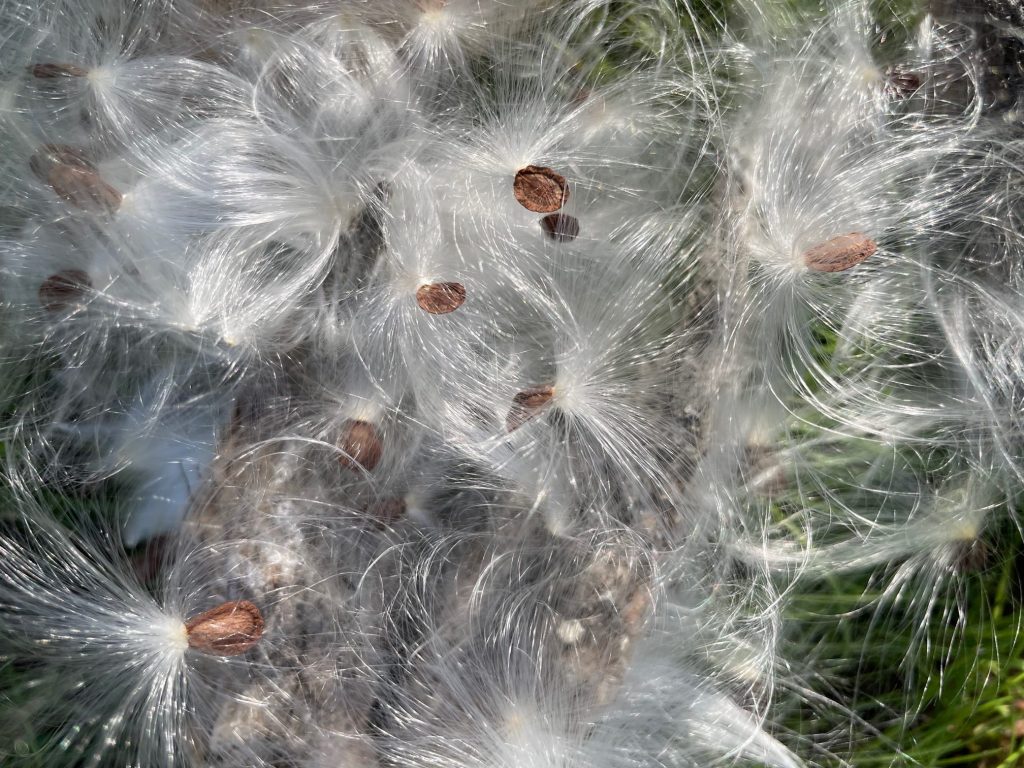
The Soft Fluff Factor
Cast aside your doubts. It is soft and quiet here in my domain. I go slow.
Gravity is just something I weave through like a sail in a three-dimensional ocean. By bouncing through air molecules within the electromagnetic forces of attraction and repulsion on a intramolecular scale I can fly.
The closest distance is never a straight line as the point I am heading is far away and undetermined. You might like that. Once I land my precious cargo, I am done. It’s my playful nature.
Strong wind today? Look! There goes my supporting cast in my evolutionary play. Rain. I will wait. My timing is impeccable. My roots go deep. I’ll be back.
In the meantime, have you seen my ambassador the Monarch? I hear he travels south for the winter. I bet I will meet him in the summer when it warms. He never disappoints. I give him my inner sap where my being resides. He becomes me in different forms. As he transforms and I too can then fly away.
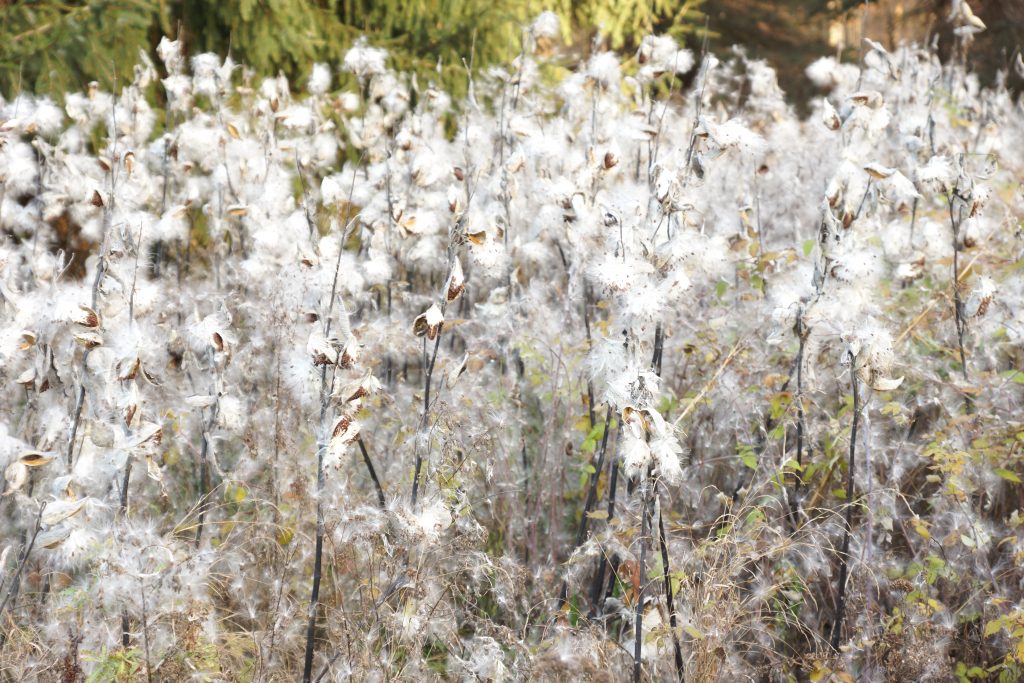
The above image is from my family’s Christmas tree farm. This was a solid dense patch near a row of Norway spruce trees.